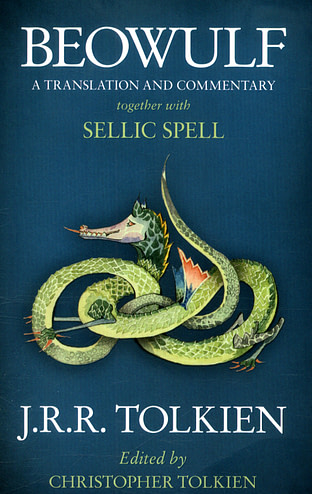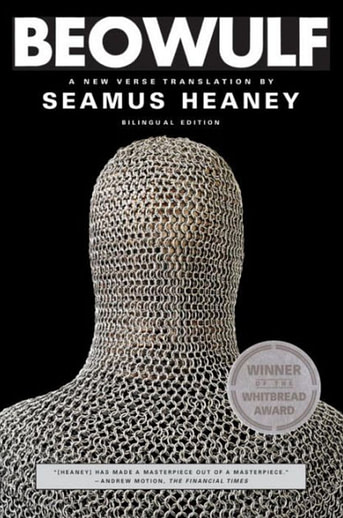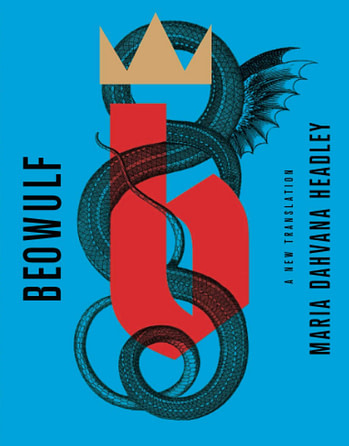Vikings, mead, and monsters, oh my! These are three cornerstone elements of the Old English masterpiece, Beowulf.
A heroic epic poem, Beowulf blends fiction, legend, and aspects of old Scandinavian culture seamlessly within its 3,182 alliterative lines.
Considered by many to be the first piece of English literature, Beowulf is one of the most important and most often translated works of Old English literature.
The poem narrates the story of the Scandinavian hero Beowulf, the son of Ecgtheow and nephew of Hygelac, the king of the Geats.
It tells of the exploits of Beowulf and his battles with two monsters and a dragon, to whom Beowulf finally succumbs at the end.
Don’t be fooled though - Beowulf is much more than just mead and monsters.
While Beowulf celebrates the triumphs of an extraordinary man who performed great feats, it also mourns his tragic death and defeat.
The poem explores several different themes, ranging from glory to vanity, courage to cowardice, and triumph to loss.
I hope this article on Beowulf gets you curious enough to go ahead and explore this ancient masterpiece for yourself.
To keep it simple and uncomplicated, I have divided the article into different sections. Feel free to skip ahead to the section that most interests you.
Now, let’s dive into the world of monsters, mead, brave men, and dragons - the world of Beowulf!
Who Wrote Beowulf?
The original author of Beowulf is unknown.
To the disappointment of many scholars, not much is known about who authored the poem. As time passed, the anonymous author came to be known as the "Beowulf poet".
What we do know, however, is that the Beowulf poet lived in what is now modern day England.
He lived in an early Christian society; one which was still very close to its pagan Scandinavian roots.
However, the Anglo-Saxons were beginning to distance themselves from their pagan past, and this is seen in some of the Beowulf passages that reveal slight Christian overtones.
The Beowulf poet was an Anglo-Saxon who felt quite at home in Scandinavian culture. However, his culture had recently embraced Christianity, and the poet lived during a time where these two cultures blended together.
When Was Beowulf Written?
There is not much evidence to conclusively put an exact date to Beowulf, though most scholars think that the poem was written around the year 750 AD.
Guesses at the poem’s composition, however, range from the seventh to tenth centuries.
What can be said with certainty is that the events of Beowulf happen during the 500 years of the Anglo-Saxon age.
The references to real people, events, and places in the poem itself help narrow down the period in which it was penned.
For instance, the poem mentions the great king Hygelac. He was a real king who died in 521 CE. There is also mention of the Battle of Ravenswood. This battle was fought in 510 CE.
History of the Beowulf Manuscript
In 1731, the only manuscript we have of Beowulf suffered damage in a fire. However, the majority of the manuscript survived, and is still quite reliable for today’s purposes of study and translation.
Until the end of the 18th century, this Old English poem remained untitled. It was only in the 19th century that scholars decided to refer to it by the name of its hero — Beowulf.
The Beowulf manuscript is now housed at the British Library. It is named after its earliest owner, the 16th-century scholar Lawrence Nowell, and is called the Nowell Codex.
It’s important to note that the Nowell Codex isn’t the original manuscript of Beowulf. The Nowell Codex is simply the earliest written-down version of Beowulf that we know of today.
The Historical Context of Beowulf
At the time Beowulf was conceived, there was very little literacy or even books to read.
Before being set to paper, legends were recited and told by minstrels. They travelled from court to court and castle to castle.
Folk singers and musicians often served as the record keepers of history. Through their recitation and performances, minstrels not only entertained and influenced people, but also preserved their tribal histories.
Beowulf, however, is more than just an oral history.
The meter, wordplay, and other textual elements point to the fact that Beowulf was indeed written down and composed.
The author did, however, write the poem with oral recitation in mind. Beowulf was composed for performance, and was widely recited by minstrels at the time.
Though there is still no clue as to whether Beowulf himself was real or not (he most likely was not), many of the characters in the poem are real historical figures.
Characters like Hygelac, Hrothgar, Ongentheow, Haethcyn, and Onela are several people who actually existed in real life!
Structure of the Beowulf Poem
Beowulf was written in a unique structure. Some scholars divide it into three main sections, and others divide it into two.
In the three-section structure, each part revolves around Beowulf's battle with a different beast:
The first part centers on Beowulf’s fight with the monster Grendel.
The second part covers Beowulf’s battle against Grendel's mother, who’s seeking revenge for her son’s death.
The third part focuses on Beowulf's struggle against a fiery dragon. He slays the monster to restore peace in his kingdom, but loses his life in the process.
As mentioned earlier, however, some scholars prefer to divide the poem into two main sections.
In this case, the first part centers on Beowulf’s time in Daneland (Denmark), where he fights both Grendel and Grendel’s mother.
The second part takes place in Beowulf’s own kingdom, Geatland (a part of modern day Sweden). In this section, Beowulf returns from Daneland and eventually becomes king.
The poem then skips ahead 50 years, where an aged King Beowulf dies protecting his nation in a fight against the dragon.
This division of Beowulf into two main sections not only reflects the setting of the poem, but also the development of Beowulf’s character.
It’s essentially the difference between young and old Beowulf: The glory-seeking, adventurous young warrior, and the mature, responsible, and courageous king.
However you want to divide up Beowulf, it doesn’t matter. The poem is still a fantastic read, with stories of monsters, exciting battles, and courageous warriors throughout.
Summary of Beowulf
The story of Beowulf begins in Daneland, in modern day Denmark. There we learn that the kingdom of the Danes is in peril.
Heorot, the mead hall that the Danish king Hrothgar built for his subjects, is regularly attacked by a monster called Grendel.
Not only does Grendel kill many of the kingdom's bravest men, but he also wreaks havoc in the lands around Heorot. The king’s warriors and soldiers continue to fight Grendel, but to no avail.
Grendel terrorizes the Danes and the land around Heorot for nearly twelve years. Eventually, in the faraway land of Geats, a warrior named Beowulf hears about Grendel and the terror he’s wrought on the Danes.
Beowulf decides to set sail to Denmark with a band of his chosen warriors and fight Grendel. Once there, Beowulf convinces King Hrothgar to give him a chance to slay the beast.
That night, as Beowulf and his men are sleeping in Heorot, Grendel attacks.
A fierce battle ensues, but finally Beowulf succeeds in ripping the monster's arm off. Grendel flees from the hall and into the woods, where he bleeds to death. An evening of feasting and rejoicing then ensues.
Unfortunately, the celebration doesn’t last long. That night, Grendel's mother emerges from her lair and attacks the men in Heorot to avenge her son’s death.
She kills one of Beowulf’s men before fleeing the hall to escape to her cave. Beowulf eventually tracks her down and follows her into her underwater den. Another battle ensues, and Beowulf emerges triumphant.
There is festivity all around the kingdom. King Hrothgar praises Beowulf with warm and kind words. Beowulf and his men are given many gifts and prizes, and then set sail back home to Geatland.
Back in Geatland, King Hygelac receives Beowulf and his warriors with relief and praise. Some miscellaneous adventures are recounted, and then the poem skips ahead 50 years.
In this new Geatland, Beowulf is now king. He rules justly and is much loved by his subjects. But soon there is cause for worry.
A deadly dragon, awakened from its sleep by a treasure thief, is now destroying homes and wreaking havoc in Geatland.
The aged king Beowulf vows to fight and kill the dragon. He decides to go it alone, but brings men for backup just in case.
As the battle proceeds, Beowulf realizes he’s in trouble. The rest of his men get scared, and all but one abandon him. The one warrior who refuses to run away, Wiglaf, rushes to Beowulf’s aid and helps him slay the dragon.
Beowulf does kill the dragon, but not before receiving mortal wounds. Beowulf dies, Wiglaf laments his dead king, and that evening a funeral pyre is kindled.
The Geats, understanding their great protector is gone, cry for fear of the future, and the approaching destruction that other nations will bring upon them.
Beowulf Analysis
Beowulf is neither a complete work of fiction, nor is it fully factual.
The Beowulf poet cleverly picked real events and characters from history, and incorporated them into the world of the poem. This helped listeners identify with the poem and find some familiarity in it.
The character Beowulf himself, however, seems to be completely original.
The poem explores many aspects of Nordic warrior culture: glory, greed, leadership, virtue, courage, cowardice, and sacrifice.
On a psychological level, one can read Beowulf’s battles as an analogy for how we should deal with our own problems: If we do nothing, they will continue to attack and destroy us.
The only way to defeat our problems is either to let them come to us (and fight them when they do), or to seek them out and destroy them ourselves.
On a broader societal level, Beowulf is about the importance of strength, honor, and virtue. It depicts how a society with strong, courageous, self-sacrificial leadership is able to thrive.
It also condemns the cowardice of those who abandoned Beowulf during his greatest battle.
Beowulf’s death is better viewed as a selfless sacrifice than simply a tragic death. While his death is tragic, the real tragedy stems from the fact that the Geats lose a courageous warrior, strong protector, and just leader.
Best Translation of Beowulf
Since Beowulf was originally written in Old English, most modern readers have to experience the poem through translation.
Here are three of the most notable translations. Also included is a comparison of two radically different translation styles, so you can get a feel of just how much the text can change depending on which version you get.

J.R.R Tolkien’s Translation of Beowulf:
This is the one that started it all.
Before Tolkien, Beowulf was taught in universities simply to help students study Old English. It was never taught as a truly artistic work of literature.
Then came Tolkien, and everything changed. The professor was the first to suggest that Beowulf should be taken serious as a work of art and an epic poem.
Tolkien’s translation of Beowulf revolutionized not only the study of Beowulf, but also the study of Old English as a whole.
While Tolkien’s Beowulf translation more accurately conveys the literal meaning of the poem, it has been criticized for not conveying the full beauty of the poem.
Seamus Heaney’s translation, on the other hand, sacrifices some of the literal meaning in order to convey the art of the poem.
It’s worth noting that while Tolkien was certainly an expert in Old English, he wasn’t a huge fan of his own translation.
This is likely because he knew he did a good job conveying the literal meaning, but not the art of the poem.

Seamus Heaney’s Translation of Beowulf:
This is by far the go-to translation of Beowulf for most people today. The Irish poet managed to make Beowulf come alive in a way other translators hadn’t been able to do before.
More impressively, however, is how Heaney still maintained so much of the magic of the original poem’s language. The alliteration within lines, and other conventions of Old English poetry are kept intact.
Heaney succeeded not only in bringing the poem to life for a modern audience, but also in making readers feel connected to the Old English, Anglo-Saxon culture in which the poem was originally written.
If you’re looking for a translation of Beowulf to begin reading now, Seamus Heaney’s translation is the best one to start with. It’s the perfect intro for beginners.

Maria Dahvana Headley’s Translation of Beowulf:
No one will ever accuse this of being the most accurate or faithful translation out there, but surely it’s the most fun!
Headley’s translation of Beowulf brings the pompous and boastful character of the poem to life. Her translation of Old English into modern slang somehow (and rather amazingly) portrays the warrior culture of Beowulf’s time both vividly and amazingly.
For example, compare her translation with Heaney’s. When Beowulf first introduces himself to King Hrothgar, Heaney’s translation reads:
So every elder and experienced councilman
among my people supported my resolve
to come here to you, King Hrothgar,
because all knew of my awesome strength.
They had seen me boltered in the blood of enemies
when I battled and bound five beasts,
raided a troll-nest and in the night-sea
slaughtered sea-brutes. I have suffered extremes
and avenged the Geats (their enemies brought it
upon themselves, I devastated them).
Maria Dahvana Headley’s translation, on the other hand, reads:
I'm the strongest and the boldest,
and the bravest and the best.
Yes: I mean — I may have bathed in
the blood of beasts,
netted five foul ogres at once,
smashed my way into a troll den
and come out swinging, gone
skinny-dipping in a sleeping sea
and made sashimi of some sea monsters.
Anyone who f***s with the Geats? Bro,
they have to f*** with me.
Yea, definitely not your “traditional” translation!
What Is the Best Translation of Beowulf?
Maria Headley’s translation is great if you’re looking for an engaging, contemporary voice that’s more of a page turner. However, it’s not always true to the original.
If you want a historic translation that accurately reflects the Old English the poem was written in, check out Tolkien’s version.
Lastly, if you want a translation that’s both faithful to the original text, and still poetically beautiful, then Seamus Heaney’s version is the one for you.
It’s the translation I recommend to all people new to Beowulf.
Why You Should Read Beowulf
Beowulf gives us incredible insight into the warrior culture of old Scandinavian and Anglo-Saxon Europe. If history interests you at all, Beowulf is a must-read.
However, Beowulf is so much more than just an interesting look back at an extinct culture.
As mentioned earlier, Beowulf explores the themes of glory, greed, leadership, virtue, courage, cowardice, and sacrifice. A close reading will bring all of these to the surface and provoke thoughtful reflection.
In addition, Beowulf is beautifully written. For those who know Old English, this is already evident.
Seamus Heaney’s translation tries to capture some of the same beauty and wordplay, but still falls short of the original.
However, even if you don’t know Old English, you can still appreciate the artistry of it. Just be sure to read the introduction where the author discusses the nature of Old English poetry, verse, meter, etc.
Lastly, Beowulf gives us some inspiration for our own lives - inspiration to be an adventurous leader, and courageous enough to slay the dragon.
For historical, thematic, and artistic reasons, Beowulf is still very much worth reading today.
Conclusion
Beowulf is more than just another monster story. It’s an epic of heroism, glory, pride, defeat, and tragedy.
Beowulf has been with us for over a thousand years. There’s a reason it sticks around still: something about it resonates with us deeply.
Whether you want to glimpse into a culture of ages past, study Old English, or get inspired to slay the monsters in your own life, Beowulf is for you.
-Evan
If you found this article insightful, scroll down and subscribe to my email list. You’ll gain instant access to my ebook, and won’t miss out on more articles like this one!
